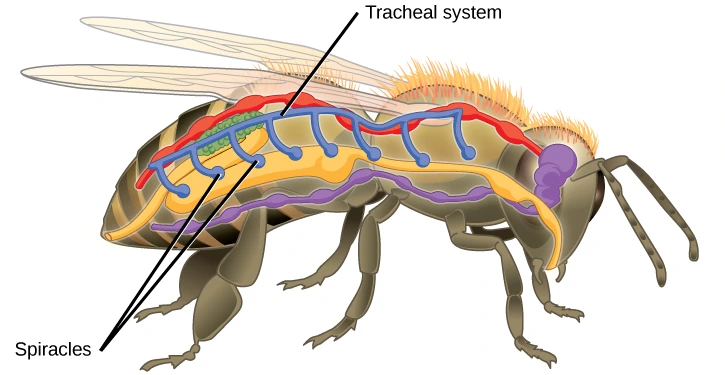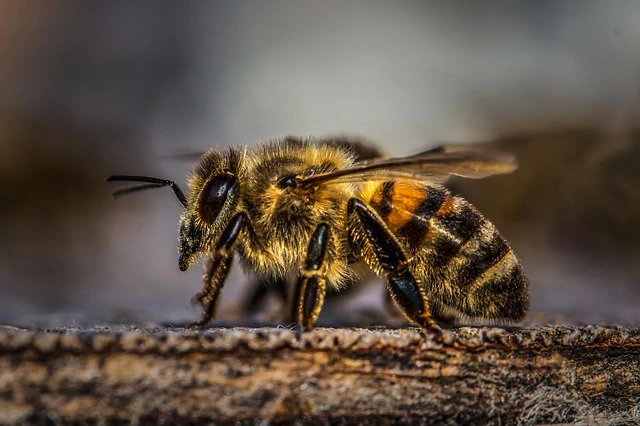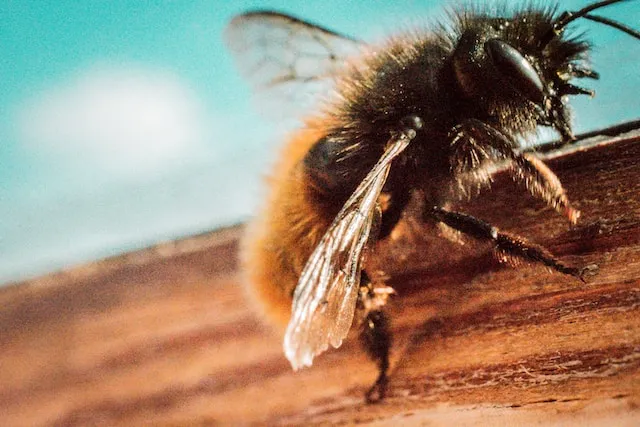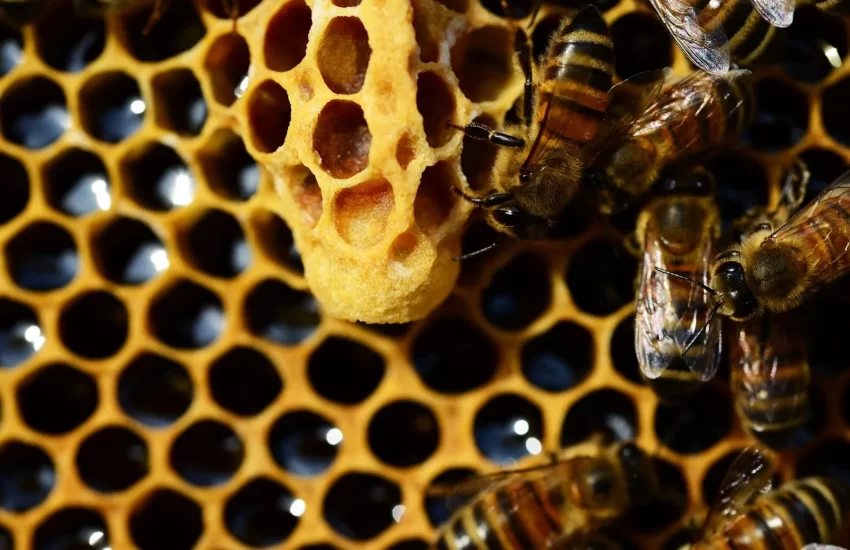Do Bees Have Lungs? How do honey bees breathe?
Bees are famed for their hard work: they fly for miles in search of nectar and pollen and only rest at dusk. As such, they require an excellent respiratory system to supply them with oxygen and dispel carbon dioxide to carry out their duties effectively like other creatures. Do they have lungs like human beings or gills like fish? Definitely not; read on to discover how they breathe.
Do bees have lungs?
No, bees do not possess lungs. Like other insects, they have a tracheal respiratory system that extends throughout the body involving spiracles and air sacs. Air gets in and out of their body through spiracles- small openings situated in the thorax and abdomen. These are one-way meaning they can only allow air in or air out at a time.
Similar Articles you may like to read –
What Do Bees Eat? Do bees eat Honey? Do queen Bees eat Honey?
Do Bees Feel Pain?
Do Bees Have Feelings
How long do queen bees live?
How many eyes does a honey bee have?
The Bee Respiratory Organs

Spiracles
Bees have ten pairs of spiracles on the sides of the body, similar to the nostrils in a human being. They are aligned on the abdomen and thorax. Six pairs are situated in the abdomen, three around the thorax, and one in the sting chamber. Air gets into the body through these spiracles. They are equipped with valves inside of them that control airflow in and out of the bee.
The spiracles connect to a tube (trachea) that allows oxygenated air into the tracheal sacs and expels carbon dioxide. A bee can close spiracles if it finds itself in submerged water, which is similar to holding breath in human beings.
Trachea
The trachea is a tube-like structure that links the spiracles to tracheal sacs. It comprises large and small tubes that ensure oxygen reaches the tracheal sacs after inhaling through spiracles. The tubes get smaller and smaller as they distance from the spiracles and reduce down to tracheoles as they reach out to body tissues. This system is similar to mammals, where arteries narrow down to arterioles and finally to capillaries as they reach out to all body tissues.
The tracheoles permeate even in high-energy muscles like flight muscles, where the oxygen demand is extremely high. The tracheal system is very elastic and twists around easily in the bee’s body to take oxygen where it needs to go. The surface of the trachea is made of chitin, a material that helps to maintain its structure and shape while still allowing flexibility.
Air Sacs
Tracheal sacs are located throughout the bee’s body (including the abdomen, thorax, head, and legs) and receive air from the trachea. The sacs are similar to lungs in mammals though they are more than two and resemble balloons. Air sacs in the abdomen are larger than other body parts. They ensure that every part of the bee’s body receives adequate oxygen. Unlike the trachea, they can expand and contract within the bee’s body. They are surrounded by fluid which changes pressure according to the insect’s abdominal plate movement. The sacs work by expanding and contracting depending on the oxygen needed by a bee. They also help to control the amount of air that flows through the tubes. Once they expand, they suck in oxygen, and when they contract, they push it to the cells.
The Breathing Mechanism
Bee breathes through trachea sacs; for oxygen to reach these sacs, it must travel through spiracles and the trachea. The breathing process starts by pulling in air through spiracles. Oxygen is vacuumed into the body through these openings aligned on each body segment and enters the trachea. From the trachea, oxygen enters the tracheal sacs. The sacs constantly constrict the abdomen triggering a motion that allows fresh air to be pumped in and out of the cells. Once the air is pulled, the outermost vents are closed to force the air into small tubules that get smaller until they reach the cells they are required to.
As a bee breathes, the air in tracheal sacs is continually replaced by fresh air by contracting and relaxing the abdomen. During contraction, the air is forced out of spiracles, and fresh air gets into the abdominal muscles to relax. Once the air reaches the tracheoles, an exchange of gases happens; oxygen diffuses to the tissues while carbon dioxide diffuses from the tissues. The carbon dioxide is taken back to the trachea and expelled from the body into the atmosphere.
When bee breaths, it constricts its abdomen causing fresh air to enter the tracheal sacs while carbon dioxide is pushed out.
How does a bee breathe?
Bees don’t have lungs like we do. Instead, they have tiny tubes all over their bodies called tracheae. These tubes bring oxygen straight to their cells. Air comes in through small holes on their sides called spiracles. These holes control how much air comes in and out. This special system helps bees get the oxygen they need to stay alive and do their bee jobs, like collecting nectar and making honey.
What features help a bee to breathe?
Bees have special parts in their bodies that help them breathe. They have tiny tubes called tracheae that spread oxygen to all their cells. These tubes are like tiny highways for air. Bees also have small holes on their sides called spiracles. These holes let air in and out, like little air vents. With these features, bees can control how much oxygen they take in, which helps them do their busy bee tasks like flying and collecting nectar. So, these special breathing parts are crucial for bees to stay healthy and active in their hives
FAQs
How is the bee body adapted to breathe effectively?
Bee has an enlarged respiratory system that enhances the speedy flow in and expulsion of carbon dioxide outside. The spiracles are equipped with valves that prevent the backflow of air. In addition, bees can quicken their oxidation rate by contacting their muscles more vigorously, increasing the respiration rate.
Can a bee breathe inside the water?
Bees are unable to breathe inside the water. When they submerge in water, their oxygen supply is cut off. They will only survive for a while and die when the oxygen in their system is depleted. Once underwater, they close the spiracles and hence can take in a fresh supply of oxygen. They can not be able to take in oxygen from the water like fish. They are also poor swimmers.
More articles you may like to read –
Interesting Facts About Honey Bees
What Happens When a Queen Bee Dies?
Types of Honey Bees, Honey Bee Stocks
What kills honey bees?
What Color Bees Cannot Recognize?
What are tracheal mites?
Tracheal mites are microscopic parasites that reproduce in the bee’s trachea. The feed on bees’ hemolymph weakens the bee’s respiratory system. In extreme conditions, the parasites can kill an entire colony.
What are the main causes of suffocation in bees?
Bees can die through suffocation. The main cause of suffocation is when the spiracles located in their bodies are clogged or coated by chemicals. This happens when bees are foraging for nectar or pollen. Oxygen cannot find its way into the bee’s body when these openings are clogged.
You might be interested in our article ” Interesting Facts About Honey Bees “



